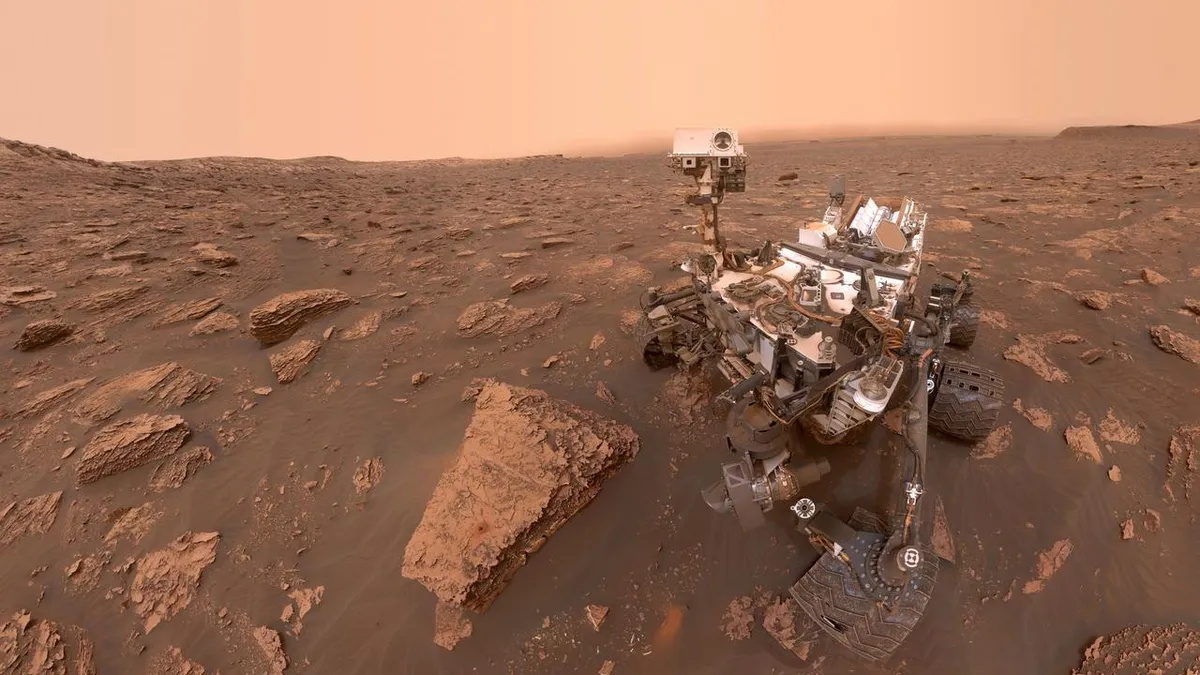
The longest molecules ever found on Mars have been unearthed by NASA's Curiosity rover, providing compelling evidence that the planet may harbor signs of ancient life. Research published on March 24 in the Proceedings of the National Academy of Sciences reveals that molecule chains containing up to twelve carbon atoms were detected in a rock sample dating back 3.7 billion years, collected from the dried-up Martian lakebed known as Yellowknife Bay.
These long carbon chains are believed to have originated from molecules termed fatty acids. On Earth, fatty acids are typically produced by biological activity, raising the possibility that similar processes might have occurred on Mars. While it is true that fatty acids can form through non-biological means, their existence on the Red Planet suggests that signs of life might be buried within its soil.
The preservation of these fragile linear molecules on Mars, 3.7 billion years after their formation, leads researchers to a significant conclusion. According to study co-author Caroline Freissinet, an analytical chemist at the French National Centre for Scientific Research, this discovery implies that if life ever existed on Mars, remnants of that ancient life could still be detectable today.
The Curiosity rover has been exploring Mars since its arrival in 2012 at the Gale Crater, a massive impact site formed by an ancient meteorite collision. Over the years, the rover has traversed approximately 20 miles (32 km) across the crater, analyzing various locations, including Yellowknife Bay and Mount Sharp, a mountain towering at 3.4 miles (5.5 km).
Known as Cumberland, the sample analyzed in the recent study was drilled by Curiosity in 2013 from Yellowknife Bay. Previous examinations revealed it to be rich in clay minerals, sulfur, and nitrates. However, despite extensive testing over a decade, the hydrocarbon strings within the sample remained undiscovered until now.
Interestingly, the hydrocarbons were found accidentally during an effort to identify the building blocks of proteins, known as amino acids. Researchers implemented a new method that involved pre-heating the sample to 1,100°C (2,012°F) to release oxygen before analysis. Although they did not find amino acids, they unexpectedly uncovered the fatty molecules instead.
To validate their theory regarding the origins of the detected molecules, researchers conducted laboratory tests by mixing undecanoic acid into a Mars-like clay. The results indicated that the undecanoic acid degraded into decane, supporting the notion that the carbon chains could indeed have originated from fatty acids. In Earth’s context, such molecules are predominantly produced through biological processes, although they can also arise through natural means.
While the longest carbon chain detected by Curiosity's Sample Analysis at Mars (SAM) instrument measured 12 carbons, the instrument is not optimized for identifying longer molecules. This raises the possibility that even longer carbon chains could be present. Evidence suggests that liquid water existed in Gale Crater for extended periods, likely fostering the chemistry necessary for life.
Regardless of their origins, the detection of these carbon chains confirms Curiosity's capability to identify such molecules and suggests they can remain preserved for billions of years in the Martian environment. Researchers aspire to return Martian soil samples to Earth for a more comprehensive analysis, with the ultimate goal of unraveling the mysteries of life on the Red Planet. As stated by Daniel Glavin, a researcher at NASA's Goddard Space Flight Center, “We are ready to take the next big step and bring Mars samples home to our labs to settle the debate about life on Mars.”